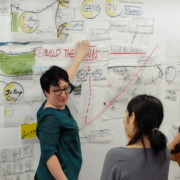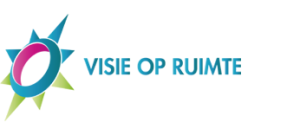Derde Sino-Dutch Planning Week, Nanjing University
Op uitnodiging van prof. Hongyang Wang van de School of Architecture and Urban Planning van de Universiteit van Nanjing, heb ik tussen 22 en 26 Mei 2017 de derde Sino-Dutch Planning Week “Return to the City” met 40 master studenten urban planning and urban design mogen leiden. Ik werd hierin bijgestaan door een team van internationale ontwerpers en ervaren docenten: landschapsarchitect Martina van Lierop, en stedenbouwkundigen Sebastien Goethals, Katarina Gugerell, Stefan Netsch en Aurobindo Ogra.

De opgave: After almost three decades of high-speed development, urban China has entered into a new phase of spatially and economically structural transformation. In the meantime, the rapid growth of information and communication technologies (ICT) has fiercely reshaped the global markets and business organizations, with its simultaneous impact on our cityscapes. As such, the logic of urbanization process in China has been shifted from quantitative expansion to qualitative promotion of built-up area. A city, in the Weberian sense, is a regular market center of human settlements.

Based on this concept, we can regard a city as a place of many and varied comings and goings, meetings and transactions. Moreover, not only transactions between goods, materials, and capitals, but also that between people, knowledge, representations. The rapid rise of so-called New Economy (cultural-creative industries, high-technological production, business and financial services, etc.) has demonstrated its strong preference for urban spatiality with vitality, diversity, and mixed use. The key urban factors (such as places, legible form, plentiful amenities) shape the location and morphology of new industry clusters, which play in turn a central role in reconfiguring the local urban space-economy and regenerating local communities.

Against this backdrop, the theme of the third edition of the International Sino-Dutch Planning Weeks is ‘Return to the city: the synergetic innovation of industries and urban spaces’. In this one-week workshop, the international tutors will instruct ten student groups to investigate five “urban laboratories”, to identify their socio-spatial characteristics, to analysis their innovative and entrepreneurial potential, and to provide the best possible solution to help the local neighbourhoods to cope with the distinctive challenges in the course of the economic, social, as well as environmental transformation. Every group will be required to finish the research roughly in the form of a comprehensive scheme for the project area and a detailed project plan for the scheme.

In this third edition of the International Sino-Dutch Planning Weeks, 40 Chinese students School of Architecture and Urban Planning of Nanjing University participated as well as four students from the Department of the Department of Planning and Environment, University of Groningen. On top of that, four Young Planning Professionals from the Ningbo Urban Planning and Design Bureau took part in the design week.

The students and tutors focussed on five case study areas embody different urbanization stages that poses different potentials to the New Economy. In a sense, they represent the current process of spatial and industrial transformation in urban China. These study cases fall broadly into three categories, 1) the inner city (City Center Xinjiekou and NJU campus with its surroundings in Gulou), 2) the fringe of the inner city (Maigaoqiao, north of the railway), and 3) the new towns (Olympia center in Hexi new town and NJU campus with its surroundings in Xianlin). In order to secure the holistic understanding of the city, each group is required to visit at least one more site besides their target area. In principle, the combination of two sites cannot be exactly the same.








